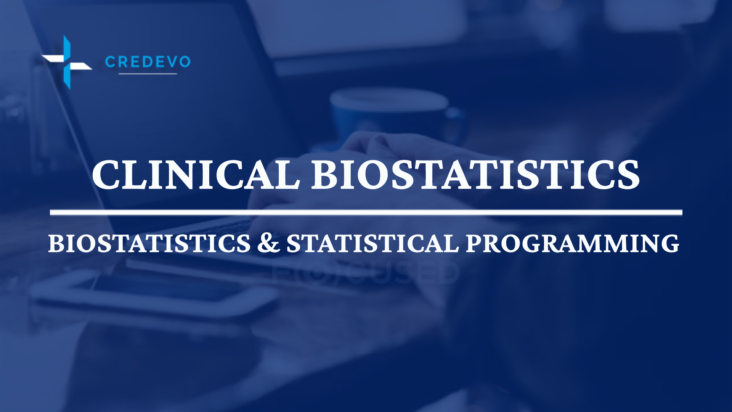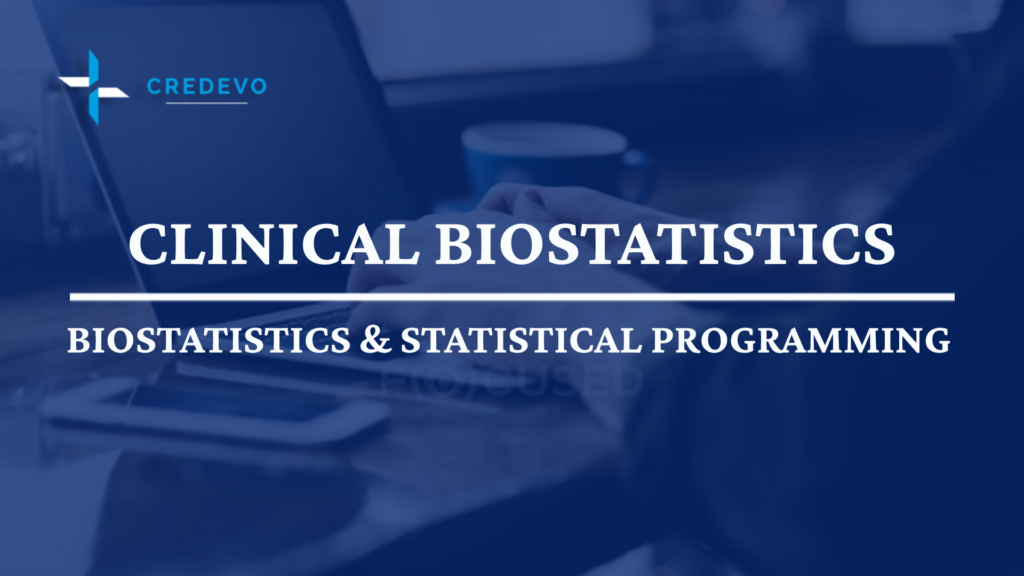Clinical Biostatistics & Its Importance In Clinical Trials

Clinical biostatistics play a crucial role in the drug development process right from trial design to protocol development. Biostatistics finds applications in various fields such as epidemiology, clinical trials, population genetics, systems biology, and more.

Biostatistics is critical to collect, analyse, present, and interpret data in clinical research. it helps in making decisions regarding the efficacy and safety of a drug, line of treatment, or therapy.
History of biostatistics in clinical research
The importance of biostatistics in clinical research is not new and started way back in the 17th century. Now it has been the heart of clinical research. Biostatistics helps in presenting the scientific manuscript with relatively sophisticated statistical analyses of a complex set of medical data in renowned scientific journals.
Biostatistics & clinical research
According to a report from Hravard, researchers often misinterpret statistical methods due to poor knowledge of statistical concepts.
Biostatistics is involved in every step of clinical research including trial design, protocol development, data management, and monitoring, data analysis, and clinical trial reporting. There should be a good coordination between statisticians and clinical operations personnel in order to ensure successful trial design and analyses.
Statisticians specialize in study designs (even complex designs like Adaptive Trial Design, Umbrella Trial Designs), therapeutic areas, and statistical methods. Due to complicated statistical terminology, it effects communication. But it is essential that the study team understands the statistical strategy proposed by the biostatistician
Role of biostatisticians in clinical trials
To maximize the chances of a new drug or device market approval, the role of biostatisticians should be involved in clinical trial management right from the start. The role of biostatisticians is not limited to analyzing data at the end of a clinical study but its much more. The biostatistician works closely with the rest of the biometrics team and management throughout the study including Data Managers, Statistical Programmers, and Medical Writers.
What exactly the biostatisticians do in clinical trials?
Biostatisticians in managing clinical trial have a long to-do list.
- They provide valuble advices during protocol development & study design,
- Calculate the right sample size,
- Ensure that the enrolled patients are correctly randomized,
- Play key role in data management and monitoring,
- They help define endpoints, and
- Provide definitions for data analysis and create tables and figures for the clinical study report.
Regarding Data Management, the biostatistician assists with CRF (Case Report Form) development and dataset specifications. Working with statistical programmers, methodological biostatisticians ensure data formatting is correct and select data to be pooled. In terms of medical writing, biostatisticians will often write the statistical part of the Clinical Study Report.
The biostatistician will outline study endpoints, sample size calculation, interim analysis planning, and the hypothesis and testing procedures in the Statistical Analysis Plan (SAP). The most well-known responsibility of the biostatistician is the definition of the sample size which involves several factors that influence the size of the study, timelines, and budget requirements.
What general service you can expect from a Biostatistical team?
- Protocol review to assure appropriate study design and randomization,
- Sample and effect size estimation based on literature review Interim analysis and Independent Data Monitoring Committee (IDMC) creation, management, and support.
- Statistical support for study reports (e.g. CSR, manuscripts, investigator’s brochure [IB])
- Regulatory statistical consulting
- CRF and diary review
- SAP generation with emphasis on appropriate data imputation methods
- Statistical programming and modelling
- Table, listing, and figure generation
Centralized Statistical Monitoring (CSM)
Centralized monitoring is the evaluation of site data for risks in real time from a single off-site location, rather than reviewing risks directly on site at each investigative site. This is known as Risk-based Monitoring (RBM) of clinical trials. Centralized Statistical Monitoring is the combination of centralized monitoring and statistical Monitoring.
Clinical trial personnel such as clinical monitors, data managers, statisticians, etc) at a location other than on-site analyses this Centralized Statistical Monitoring (CSM).
Based on risk assessments about how the clinical information is captured and the protocol designed, risk-based monitoring activities can be proactively supported by the usage of reporting tools.
Why do you need a Centralized Statistical Monitoring (CSM)?
Researchers consider centralized monitoring as a new, more efficient approach to on-site visits. A CSM approach helps to detect faulty equipment errors, negligence or fraud, protocol deviations, and unexpected patterns which then identify the sites that need further investigation.
This approach helps in efficient data cleaning, subject level data review, and statistical analysis to decide whether an on-site visit is triggered by risk.
What are the application of centralized monitoring techniques?
Centralized monitoring techniques can be applied to
- verify critical source data remotely
- monitoring data quality through routine review of submitted data to identify different types of errors
- analysis of site characteristics aids in defining poorly performing sites
- identify data trends which cannot be detected on-site like data consistency and accuracy or missing data
- complete of administrative/regulatory tasks
Source Data Validation is usually time-consuming and not as effective at identifying potential risks. Generally CSM is considered to be cheaper and more efficient alternative to on-site monitoring. A CSM approach performs data quality checks on all trial centers at the subject and site levels. Statisticians can then analyze the data in real-time to identify sites that need further investigation due to unusual data patterns.
The main errors found at the participant level are incorrect dates and outlying values. Meanwhile, at the site level, data discrepancies can be found when rounding numbers, comparing mean/average results, analysis of variability, inliers, and correlation checks. In a CSM strategy, many of these discrepancies can be improved using technology solutions.
Electronic Data Capture & RBM
Electronic Data Capture is an essential part of an RBM technology strategy since it captures data in real-time. EDC allows Investigators to capture and monitor site activity and captures data and determines which data need to be verified and analysed. Although most EDC systems provide built-in reports to support data management activities, other metrics and information which are needed to verify the risk-based approach are not provided to final users.
Do you have any queries or requirements related to Biostatistics for your clinical trials?
Talk to us today. Provide preliminary details below, and we will help you achieve your objectives for clinical trials.